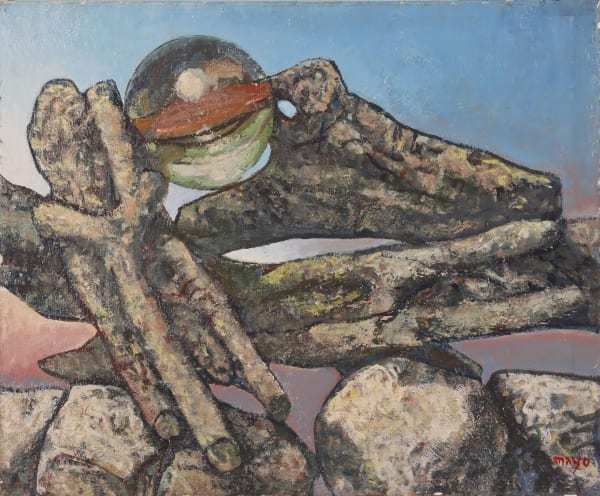Mayo (Antoine Malliarakis) (1905-1990)
Antoine Malliarakis (Mayo) was born in Egypt in 1905 to a Greek father who worked as an engineer for the Suez Canal Company, and a French mother. He moved to France in 1914 and studied architecture in Paris, before being accepted at the École des Beaux-Arts in 1924. He frequented Parisian avant-garde circles and attended the Surrealists' meetings from 1924, where he met André Breton, Max Ernst, René Magritte and Yves Tanguy. He first exhibited alongside De Chirico, at the Galerie des Quatre Chemins in 1929, and also made a living as a costume and set designer.
Mayo travelled back to Egypt from 1933-1934, and again between 1937-1941, where he contributed to the elaboration of the Groupe Art et Liberté (jama'at al-fann wa al-hurriyyah), founded in 1938 in Cairo by the Egyptian poet Georges Henein (1914-1973). This was a radical collective of artists and writers based in Cairo, and whose body of work formed an underrepresented yet distinct chapter in the history of surrealism. The work of the group was recently explored in an exhibition organised by Tate Modern and The Metropolitan Museum of Art in New York, entitled Surrealism Beyond Borders, in which Mayo's work featured.
In 1966, Mayo moved his soon-to-be demolished Paris studio to Rome at Via Magutta. Following this move, Mayo began a new body of work based upon Ovid's Metamorphoses, and explored the communion between the human figure and nature, depicting volumes and depths through a masterful and bold use of colour. In 1983, the Centre Cultural Français de Rome exhibited a retrospective of Mayo's work. In 1985 Mayo returned to France. He received the Grade de Commandeur de L'Ordre des Arts et des Lettres.

